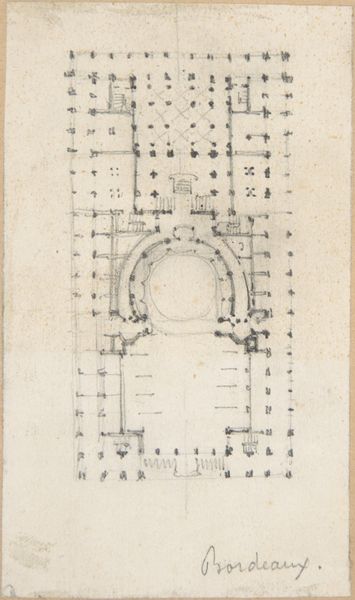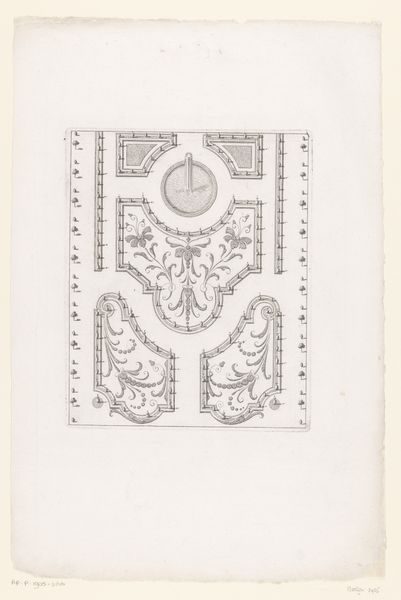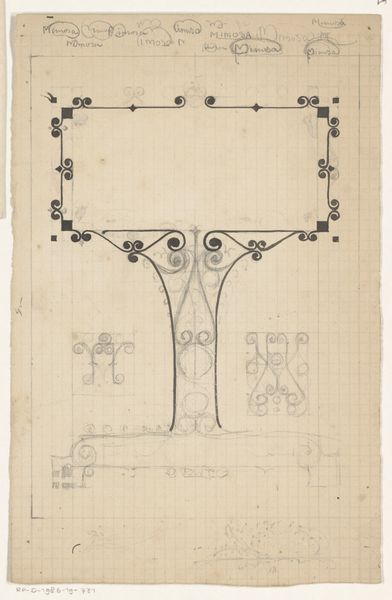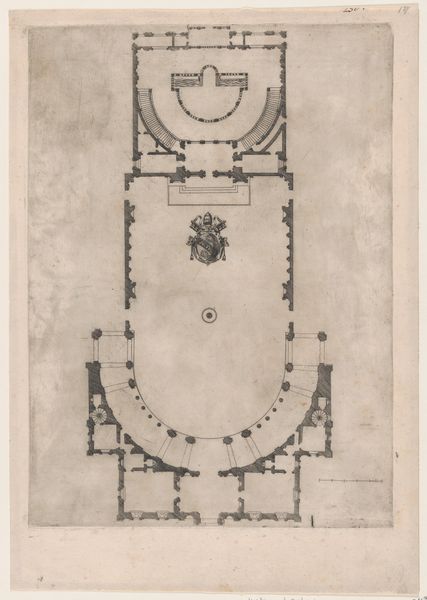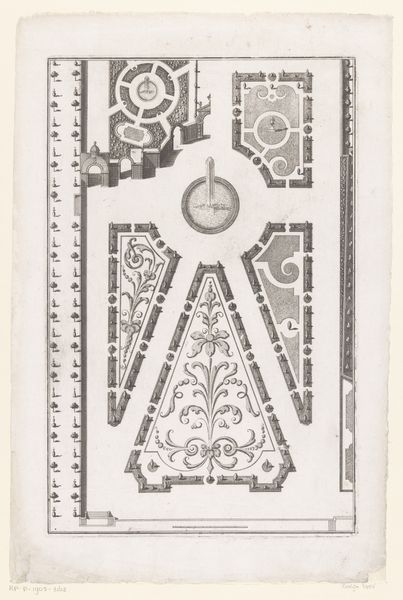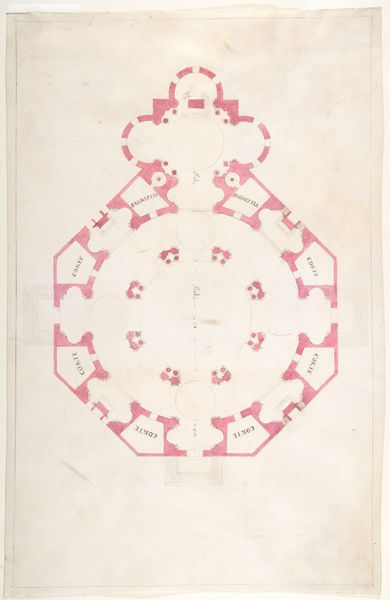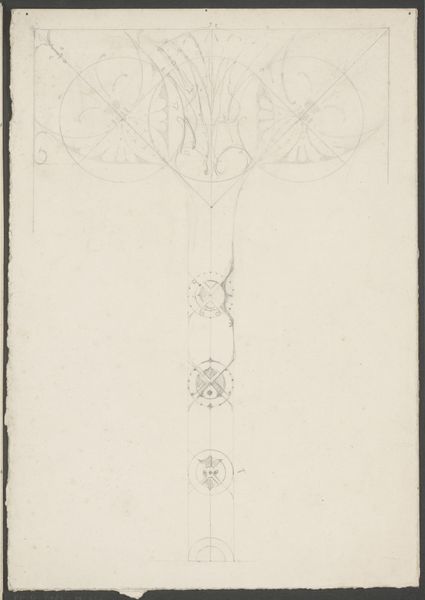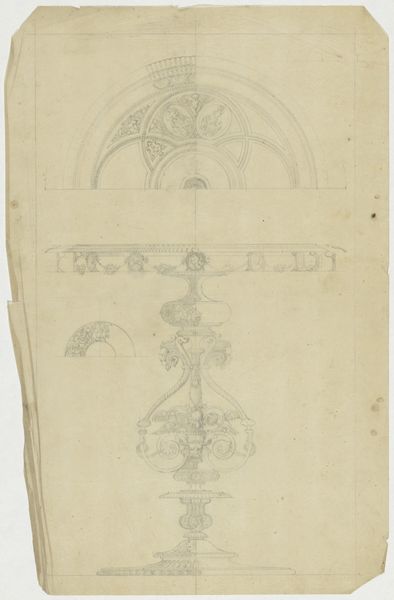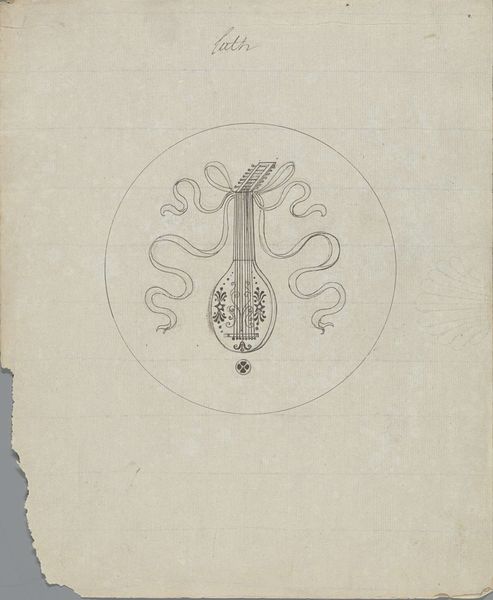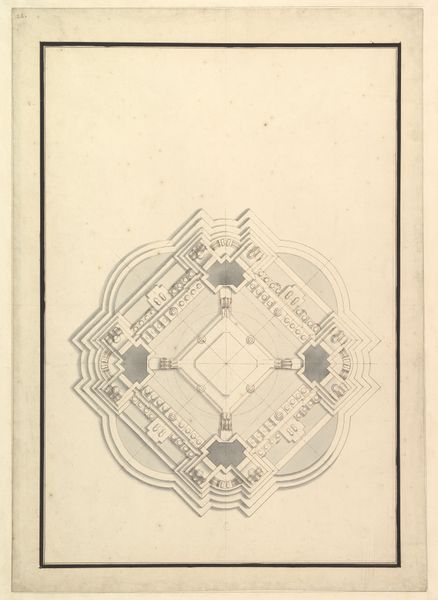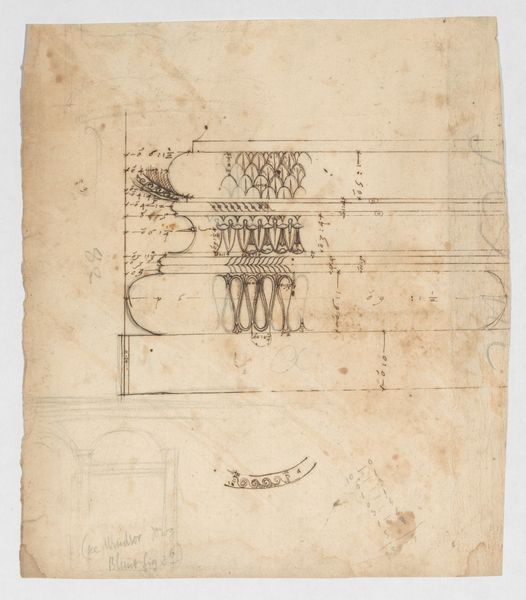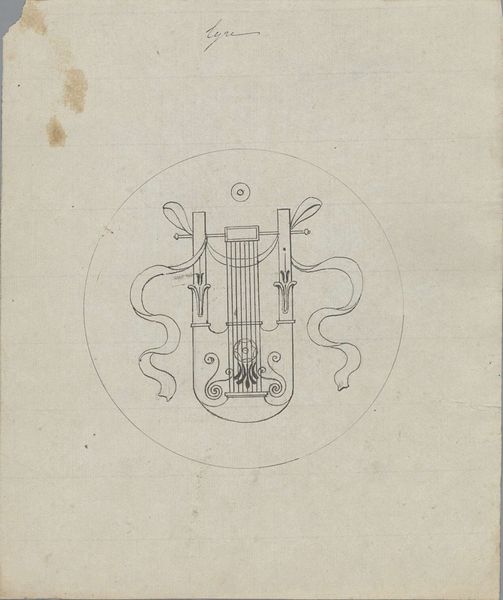
Fotoreproductie van een plattegrond van het Sint-Pietersplein en de Sint-Pietersbasiliek te Rome c. 1875 - 1900
0:00
0:00
drawing, print, paper, photography, architecture
#
drawing
# print
#
perspective
#
paper
#
photography
#
geometric
#
history-painting
#
academic-art
#
architecture
Dimensions: height 321 mm, width 140 mm
Copyright: Rijks Museum: Open Domain
Jean Pierre Emanuel Lampué rendered this photorealistic plan of St. Peter’s Square and Basilica in Rome with precision. The basilica, in the shape of a Latin cross, anchors the square. The eliptical shape of the square, embraced by colonnades, invites the faithful. The cross, of course, is the dominant symbol, deeply rooted in Christian iconography, representing sacrifice, redemption, and the intersection of the divine and earthly realms. But let us not forget that its form predates Christianity, appearing as a symbol of cosmic balance in ancient cultures. Think of the Egyptian Ankh, a symbol of life. The elipse form of the square calls to mind ancient amphitheatres. The architecture amplifies the emotional experience of the space, creating a stage for spiritual communion. This connection between form and emotion reveals how collective memory shapes our understanding of sacred spaces. This plan is not merely a representation of space, but an encapsulation of centuries of cultural and spiritual evolution.
Comments
No comments
Be the first to comment and join the conversation on the ultimate creative platform.

